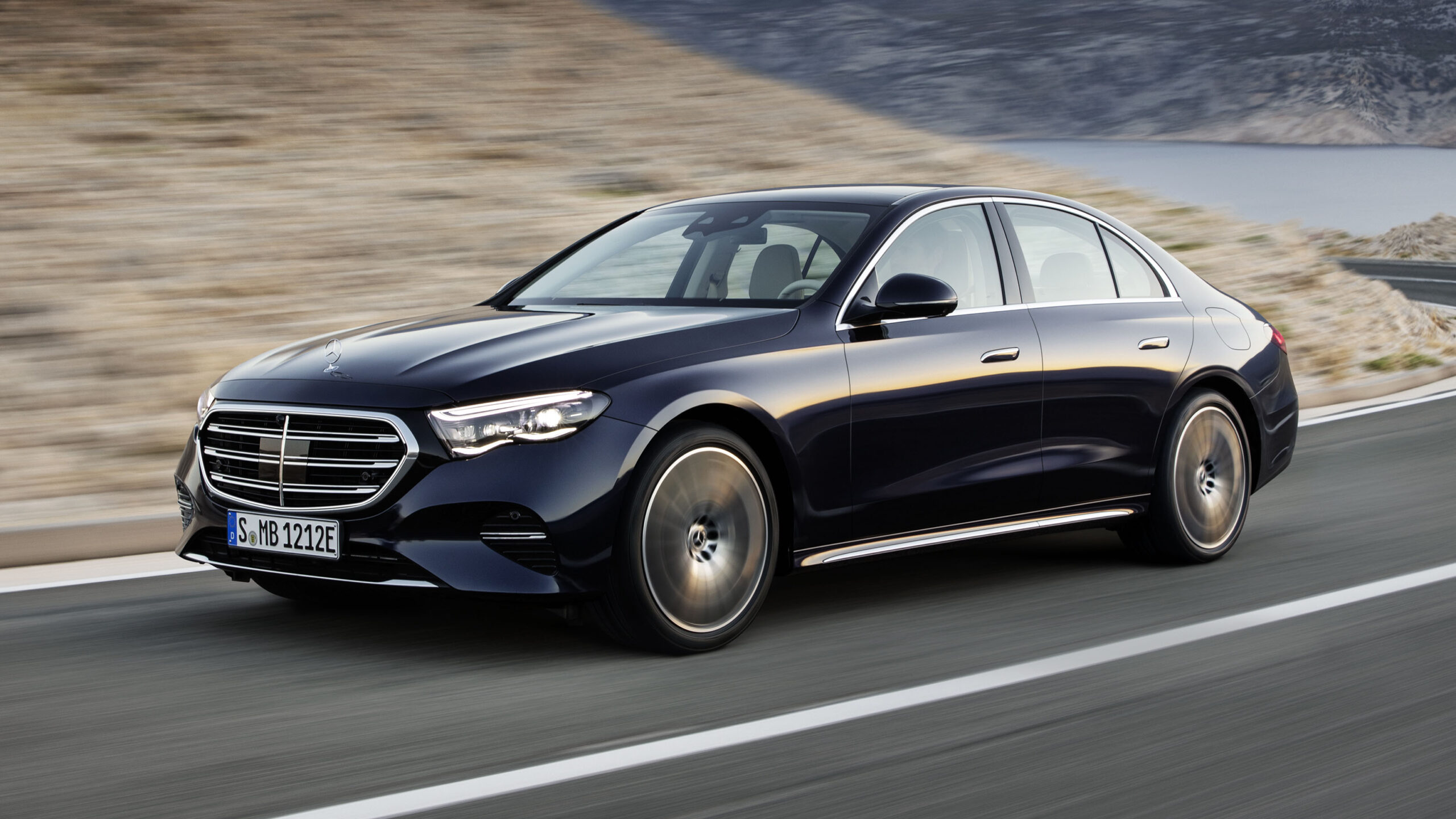The new E-class draws from the firm’s latest electric cars in its design and tech, despite featuring combustion engines across the board
Mercedes is pushing ahead with its plan to become all-electric by the end of the decade, but in the interim, combustion-engined cars will remain at the core of its range. As such, the firm has revealed an all-new E-class with petrol and diesel power featuring across the board, designed to sit alongside the electric EQE saloon with which it borrows its styling ethos and in-car tech.
Riding on the latest version of the firm’s MRA platform, the E-class doesn’t emulate the ‘single-bow’ silhouette of its EV stablemates, but its blacked out front grille and headlight arrangement is familiar, as are drag-reducing elements such as optional flush-fitting door handles and smooth, decluttered body panels. This contributes to a drag coefficient of just 0.23, supporting the E-class’s efficiency brief.
With the optional Technology package, the E-class gets a full suite of chassis electronics, including air suspension with continuously adjustable adaptive dampers. Rear axle steering is also available, turning the rear wheels by up to 4.5 degrees to improve low speed agility and cruising stability. With the E-class wheelbase having grown by 20mm this time around, the rear-wheel steering could help emulate the feel of a more lithe, compact saloon, reducing the car’s turning circle by up to 90cm.
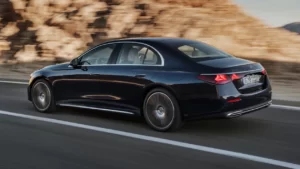
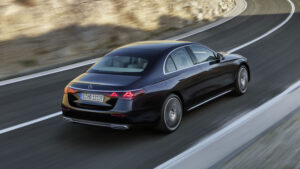
Electrification has made its way into the entire range for this generation of E-class, with a choice of mild and plug-in hybrid petrol and diesel options (the former receiving a steel spring suspension setup that sits 15mm lower than the PHEV variants). The powertrains are built around 2-litre four-cylinder units from Mercedes’ FAME engine family, kicking off with the E200 mild-hybrid petrol. Supported by a 23bhp integrated starter-generator unit, the E200 offers 201bhp, and sits alongside the 194bhp E220 d which features the same electrical system.
A duo of plug-in hybrids sit above these; the E300 e and E400 e. Each uses a 2-litre petrol engine combined with a 127bhp electric motor, but while the E300 e generates 308bhp and 406lb ft of torque, the E400 e squeezes more from the combustion engine with peak outputs of 375bhp and 479lb ft. A 4Matic four-wheel drive system is optional with the E220 d and plug-in hybrids, and so equipped, the E400 e sprints from 0-62mph in 5.3sec.
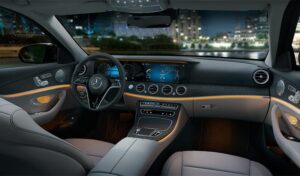
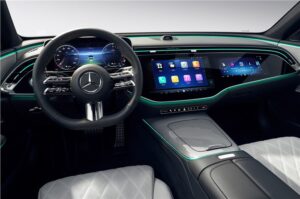
Inside, Mercedes is persisting with the heavily digitised cabin architecture that debuted with the flagship EQS, dubbed ‘Super screen’. While a large central display is standard, buyers can opt for an additional passenger display to allow for control of the likes of the navigation and entertainment systems. There’s also a new iteration of the firm’s ‘Hey Mercedes’ voice assistant, with Level 4 Automated Valet Parking allowing the model to park itself without a driver inside should you opt for the Intelligent Parking Pilot option.
Order books for the all-new 2023 Mercedes-Benz E-class are set to open in September. UK pricing is yet to be confirmed.
source: evo magazine



